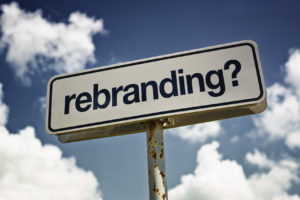This has been a great series of conversations with cryptocurrency expert Alex Tapscott, and we’re just about done. Alex is founder and CEO of Northwest Passage Ventures and coauthor—with his dad, business theorist Don Tapscott— of the book “The Trust Protocol: How Blockchain Technology Will Change Money, Business and the World.”
In previous conversations, we delved into the issue of security, trust and the structure and solidity of blockchains, bitcoin’s major technical innovation. Here, we discussed a topic near and dear to my heart … regulation. In short, who’s minding the store, and what does government think about cryptocurrency?
“There’s a misconception that’s held by a lot of people that governments are ambivalent and in some cases hostile to cryptocurrency, but that’s simply not true,” Alex said. “Yes, countries like Russia, Iran or Bangladesh are not onboard with digital monies, but in most mature, developed countries, governments are looking at this as a tool and an opportunity, not as a liability.
“The reason is quite straightforward. Consider central banks, which have three important roles in business and the economy—to manage monetary policy like interest rates and money supply; to act as a lender of last resort in the case of crisis or liquidity crunches, putting credit and capital back in the system; and to act as regulator.
“And when it comes to being a regulator, what do you care about the most?” Alex continued. “You care that consumers are being protected, that companies are not violating the law or committing crimes, and perhaps most importantly you care about risk in the system. You want to ensure that risk is not being concentrated in the wrong places where it could eventually lead to a crisis.”
Alex said that a great advantage to a blockchain, from a regulator’s standpoint, is that they can see transactions happening in real time, and can identify pretty easily whether or not money is flowing in ways that might be suspicious, or to places (Iran, China) where money laundering or other nefarious dealings have been known to take place rather often.
“One of the reasons why the global financial crisis happened was that regulators were unaware of how risk was getting concentrated in the hands of different intermediaries,” Alex explained. “A lot of those transactions were done bilaterally, at different parties, where Goldman and Lehman Brothers (for example) might not know how much each of them owed to each other. And often they were using really antiquated technology where the records would be held in Excel spreadsheets or filing cabinets.”
Alex noted that if these transactions had been cleared and were settled on a public ledger like a blockchain, regulators would have had much better visibility and would have been able to react more quickly when things looked like they were getting out of hand. It’s certainly an interesting position.
Another point Alex made—and that regulators should appreciate—is rapidity of response.
“Consider monetary policy,” Alex said. “When you cut interest rates—whether it’s to increase spending or borrowing, or boost investment in equities or consumer confidence … whatever—you’ve got to wait a few months to randomly sample retailers and check in with banks, these types of things, to see how credit books have grown. And that means that your response to things are slow.
“But if you had a digital dollar that was issued on a blockchain, and you cut rates, you’d be able to see in real time all the metadata about how that money was circulating and flowing through the system,” Alex said. “That would give you much better information on whether or not your policy was effective. Many regulators are saying blockchain technology could help them do their job a lot better, and it’s the reason regulators and government officials in many parts of the world are really keen on this technology.”
I want to thank Alex Tapscott for sharing his views about bitcoin, blockchain and the future of digital currency with me, and of course with all you readers. Please feel free to review previous posts in this blog series, about digital currency security, building trust, blockchain details, and reputational issues. And as always, I’d love to here your thoughts.






